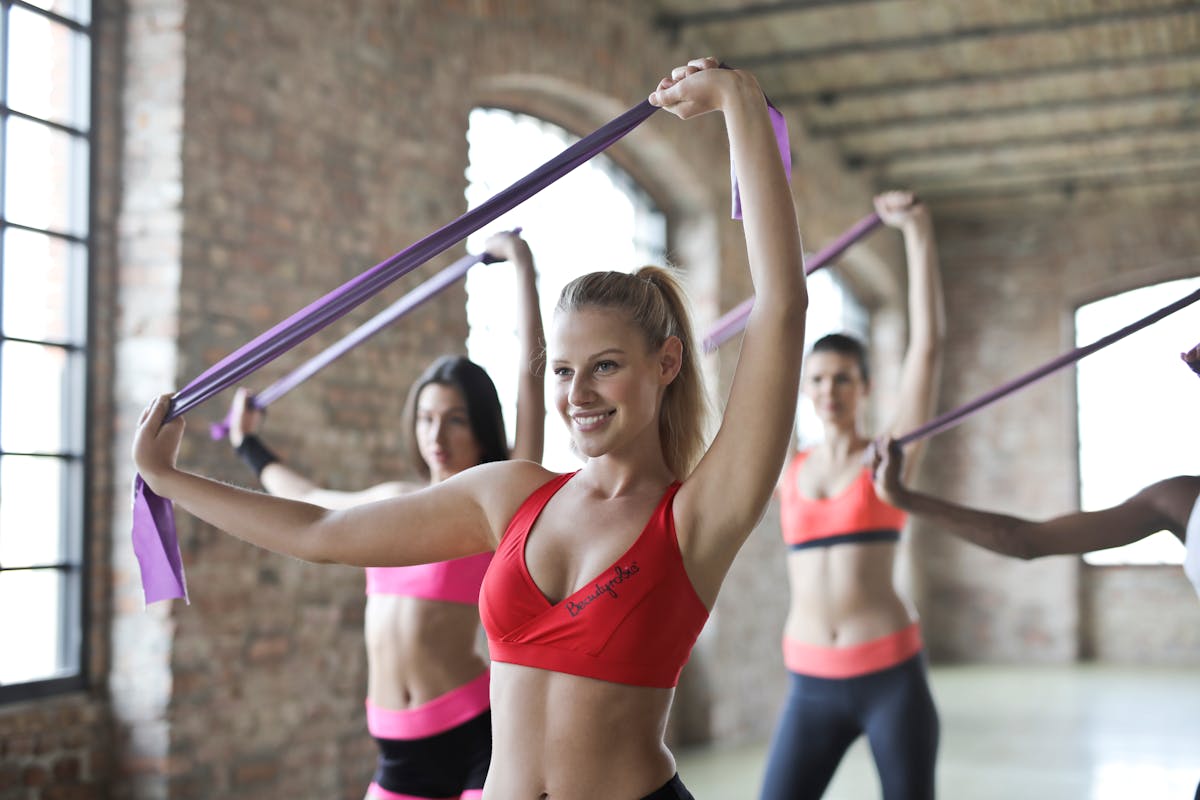
The Only Physical Exercise That Can Actually Reduce Your Biological Age by 20 Years
Why, when, how and where to exercise to age beautifully?
At a lecture that ultimately changed her lifestyle, Laura Sola, a journalist at Italian Vogue, listened to Felipe Isidro, professor of physical education and director of Physical Exercise & Health Consulting.
“Who here exercises?” Isidro asked at the start of the lecture. He immediately explained: “I’m asking because 7 out of 10 people don’t exercise at all — that’s 70% of the population. And note, I said ‘exercise’, not ‘physical activity’. Physical activity is movement we do automatically: walking, climbing stairs, carrying shopping bags… Of course, that’s always better than sitting, but it doesn’t offer the same benefits as exercising, which is intentional and structured movement. Ideally, you should combine both: move more every day and also set aside time for training. This lifestyle shift is crucial in a society that encourages us to move less and less — between cars, elevators, and escalators. Today’s goal is to understand the importance of exercise, especially strength training,” writes zadovoljna.rs.
How to Assess Muscle Condition
There are various simple tests that help us understand the state of our strength and fitness so we can know where to start and how to progress. Here are some tests Isidro recommends doing at home if you want to begin strength training:
Dynamometer test: an instrument that measures grip strength. Reference charts are easily available online to check whether your strength level is appropriate for your age and sex. This makes it possible to detect conditions such as sarcopenia (loss of muscle mass and strength) long before serious symptoms appear.
Chair test: sitting down and standing up 5 times as fast as possible. You only need a chair and a stopwatch. This test measures leg strength — the part of the body with the most muscles, but also where mass is lost the fastest.
Stork test: combines strength and balance and consists of standing on the non-dominant leg (usually opposite to your dominant hand), raising the other leg and holding the position without using your arms. You should maintain this for at least 45 seconds. People under 50 should do it with their eyes closed, and older people with eyes open to avoid falling.
6-minute endurance test: walk as fast and as far as possible in that time. Less than 500 m means poor cardiorespiratory capacity; 500–700 m is acceptable; over 700 m is excellent. “The goal of these tests is not only to find out where we are but also to track progress,” explains Isidro. “Sometimes we feel change, but often objective data is needed — these are simple tools that allow us to see in real time whether strength training is working.”
Training for Weight Loss or Muscle Strength?
We often think the goal of exercise is fat loss. In reality, while exercise helps with that, Isidro emphasizes that it’s not the main reason to work out. The real target is the muscle and its mitochondria — those little “batteries” that generate the energy we need for life. When mitochondria function well, we feel strong. When they are damaged, we feel fatigued and burn fat less efficiently, even on a diet. As Isidro stresses, there is no magic pill. The only “medicine” that improves mitochondrial function is exercise, especially strength training.
“Keep in mind that fat doesn’t only accumulate under the skin but also in organs, the abdomen, and even inside the muscle itself,” the expert adds. “That’s why training is important: it not only strengthens muscles but also ‘cleans’ fat from them, even if that’s not the primary goal.”
He compares it to a mobile phone: “A new one charges quickly and holds the battery for a long time, but over time it weakens and drains faster. The same happens to those with damaged mitochondria: they wake up full of energy but are exhausted by mid-morning. Sound familiar?”
Fast and Slow Muscle Fibers
Muscles have slow fibers, responsible for endurance (e.g., walking), and fast fibers, important for reacting to sudden events or lifting loads. Fast fibers are the first to disappear with age.
“Walking improves endurance but doesn’t stop the loss of fast fibers,” says Isidro. “If you don’t do strength training, you become slower. We see this in older people who start walking in tiny steps because they’ve lost those fibers. Strength training is the only way to preserve them. Aging is inevitable, but we have the chance to age beautifully.”
He adds that muscle mass increases up to age 25, is maintained until 35, and then starts to decline. This process speeds up after 50 and even more after 65. There are 70-year-olds with the strength of inactive 40- or 50-year-olds thanks to daily training, proving that exercise can take as much as 20 years off biological age.
How to Start Strength Training: A 7-Step Mini Guide for Beginners
Strength training works like medicine — the key is the dose. Water hydrates, but too much water drowns. The same goes for strength training. It’s not about doing a lot, but doing it right. Isidro’s advice: few reps, plenty of rest, and above all, don’t chase exhaustion.
“Many think that if they don’t feel exhausted at the end of a workout, they haven’t trained properly. In fact, the opposite is true: in strength training we’re not chasing fatigue but quality.”
7 Tips to Get Started, Regardless of Age or Level
Increase frequency gradually. The minimum is twice a week, ideally 3 or 4 times on alternate days. Prioritize strength over endurance — if you do cardio and strength on the same day, finish with cardio.
Start with the legs if you’ve never exercised before. The lower limbs have the most muscle mass but lose it the fastest. They are dominated by fast fibers, so they need targeted training.
Prioritize intensity over repetitions. Exercises should be performed intensely (quickly) to activate fast fibers. Do fewer reps than you can.
“If you can do 30 squats, do 10 or 15. If you can lift weights 15 times, do only 6 — fast on the way up and slow on the way down. The key is the intention of speed, as this activates fast fibers through the nervous system.”
Respect rest — at least 1 minute, ideally 2–3 or more between exercises. You’re fully recovered when you can talk or even sing, not just say short words.
Avoid exhaustion. If you get tired, you’re using slow fibers and losing fast ones. It’s better to do a few exercises well, repeat them several times, and stop before fatigue sets in.
Start with short sessions — 5, 10 or 15 minutes, with breaks between exercises. “We all have ten minutes a day if we want to. The problem is often past experience — many have seen exercise as tiring and pointless. If we make it easy, fun, and see the benefits, we’ll find the time and get into a good rhythm,” says Isidro.
Control your breathing. Respiratory muscle work is crucial because it improves recovery and endurance. Long, full breaths, feeling the diaphragm, and even devices that force stronger inhalation or exhalation are excellent for strengthening these muscles.
When, Where, How and Why
When: ideally in the morning. This activates the sympathetic nervous system early, making it easier for the parasympathetic system (responsible for rest) to work later, improving sleep and melatonin production.
Where: if possible, outdoors. Morning sunlight helps align the circadian rhythm, raising melatonin levels in the evening.
How: using your own body weight or resistance bands or a medicine ball. The key is to choose exercises that match your level and can be done regularly. Group workouts are even better because social interaction motivates and, research shows, prolongs life.
Why: because what isn’t used is lost — muscles, bones, even the pelvic floor in women. Strength training improves the deep sleep phase (No-REM), which decreases with age, and longer No-REM phases are linked to healthy aging. Training is also an investment in future health and reduces anxiety, making us feel better on every level. Remember: a healthy body is a perfect body.





